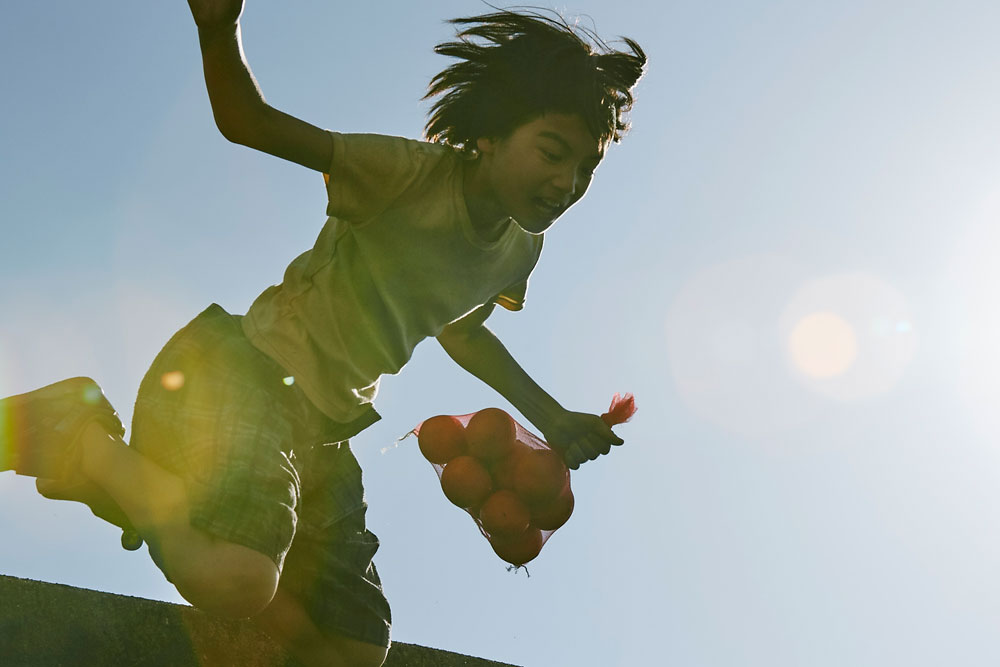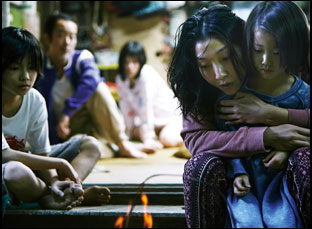After the accumulation of small details have added up to so much in the films of Hirokazu Kore-eda, it’s difficult to quantify the power of his latest film “Shoplifters,” which feels like the mighty culmination of his entire body of work to date. Like most of his films, it revolves around a family, the Shibatas, living in Tokyo, experiencing tough times. While the family’s patriarch Osamu (Lily Franky, so indelible from Kore-eda’s “Like Father Like Son”) and his wife Nobuyo (Sakura Ando) occasionally find work, they are largely dependent on a paycheck drawn by their eldest member (Kiki Kirin) for her pension and Osamu and his son Shota (Jyo Kairi) resort to pilfering food from the local supermarket to keep the rest of the family, including an older sister Aki (Matsuoka Mayu), fed. Yet it gradually becomes apparent that this is a clan made up of convenience rather than shared DNA, a revelation sparked by Osamu’s hasty adoption of a four-year-old he and Shota see on the streets and come to call Juri (Miyu Sasaki), shivering in the cold alone late one evening.
With films such as “Like Father Like Son,” where the parents of babies switched at birth became aware that their sons weren’t genetically theirs, and “Our Little Sister,” in which three siblings discover upon their father’s death that they have a 14-year-old half-sister that that subsequently take in, Kore-eda has long questioned what constitutes a family and given his last film, a departure into thriller territory with “The Third Murder,” he’s become increasingly fascinated with what constitutes a crime. (Cryptically — and tantalizingly, he mentions that “having done ‘The Third Murder,’ the ending for [‘Shoplifters’] became clearer to me.”) In combining these disparate lines of thought in “Shoplifters,” the director not only finds compelling drama in Shibatas’ family dynamics, but the very underpinnings of society that have pushed them to coalesce, coming to question the circumstances that have driven them to poverty with little hope of upward mobility and the disconnection that has come with modernity. Although the presence of Juri comes with the threat of prison should her parents ever come looking for her, it’s damning that only the affection that has grown over time between the members of the family under dire straits obscures the cramped conditions they live in.
“Shoplifters” is undoubtedly the work of Kore-eda, both in its story and its mastery over how that story is told, yet the filmmaker is not a strong believer in the auteur theory, quick to give credit to the talented ensemble that comes together both in front of and behind the camera to bring his vision to life. Whether it was leaning on actors with whom Kore-eda had worked before such as Franky and Kirin, who sadly passed away just months ago, as the pillars on which to build the rest of this family of misfits or giving largely free rein to his behind-the-scenes collaborators for a film that very much took shape after it was already in production, “Shoplifters” draws its incredible strength as much from being a collective effort as being a culmination of the filmmaker’s career thus far. To underscore that point, most of our conversation with the director, recently in Los Angeles on a rare trip away from “The Truth,” his first non-Japanese production currently shooting in France with Ethan Hawke and Juliette Binoche, concentrated on the small details and contributions from his collaborators that make the Palme d’Or-winning drama so satisfying both for him and for audiences.
During the time I was making “Like Father Like Son,” one of the questions that came up [with] a relationship between a father and a son [was] is it time that you spend together or is it blood? Is that what makes the relationship? That question developed inside of me and I thought it’s time to explore a family that doesn’t have a blood relationship, so if they’re not tied by blood, what should I tie them [together with]? I decided they’re connected through crime, but [then I thought] what kind of crimes would I work with? At the time, there were news reports of people who did not submit a death certificate and kept collecting pension of the parent that had died. They actually relied on it for their income, so pension fraud was becoming an issue and there were also various articles about families that would make their money by shoplifting from across Japan, so I decided to use those two crimes as the motif.
You’ve acknowledged that “After the Storm” marked a bit of a turning point where you’d start making films about broader Japanese society. What inspired that shift?
I look at it a little bit differently because for me, from “Still Walking” to “After the Storm,” that thread was really very much about me looking at what went on inside of a family, inside of the home, [with] a narrow and deep perspective. But that was more the exception. With “The Third Murder,” I felt I went back to where I started, which was with “Nobody Knows” and looking at the family within society. That’s the thread I was following and then I got disrupted by my own personal inquiry.
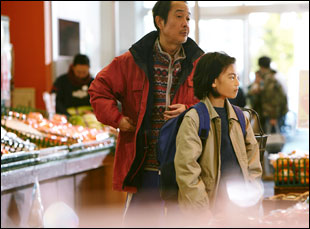
I wanted some hand signals that would tie the family members together, almost like their little secret magic spell that connected with shoplifting, so I asked Mr. Goto, the assistant director to come up with something, and this is what he thought of.
There is a bit of a fantastical quality to the film, which comes through subtly through the score, and I loved how visually, there are often boxes created throughout the frame, particularly inside the family’s house. How did you go about getting the tone right aesthetically?
In terms of the visual, in terms of Kondo [Ryuto, the cinematographer], when he talked to me about how he viewed it, he really wanted a poetic state, so visually we were looking at poetic images around their lifestyle and after about a certain amount of filming, I just let Kondo-san go — he was the one that decided the framing, so it was his sensibility that created those lines that you’re talking about. With Honoso [Haruomi, the composer], it was more the image of swimming, so the family were like a bunch of little fishes at the bottom of an ocean swimming around and they would look up at the surface and see the sparkling night, but the sound of that sparkling night would come down to the bottom and twinkle around it.
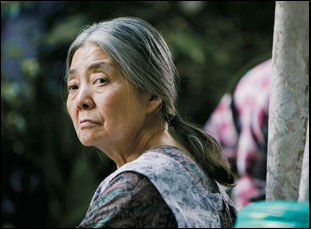
Yes. When we started shooting in the summer, the truth is the script wasn’t really finished. I hadn’t really had a complete script by that point and we shot it anyways because we thought we might need it. I told all the actors we may not even keep this scene and Kiki Kirin [who plays the grandmother] said, “Well, in that case, it probably won’t stay. It won’t survive.” [laughs] But then there’s the scene where it rains suddenly and where [the family] finds the cicada, so it was fortuitous when those things all happened. And then when I went back and wrote the script properly in the autumn, I incorporated some of those things in it.
Was the family’s home on screen a set or a real location?
We did use a real house [for exteriors]. There was a small house that existed within all those high-rises, but most of the interior scenes were shot on set. There’s a scene where [you see] the entrance to the home [where] they’re on a little corridor or a little porch outside and when I went to see the house, I was just looking around it with my crew. it’s very near Sumida River, which is very famous for the fireworks coming up, so I just thought, “Oh, it’s very near the river, but [the family] would never be able to see the fireworks,” [which] stayed with me, so I decided to write a scene about it.
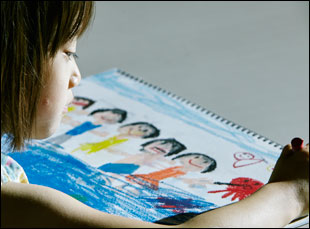
On the first day of shooting, we were shooting the scene where she’s discovered on the veranda and it just happened that the tooth came out. [And she yelled] “Oh no, my tooth came out!” We talked about fixing it so there was a fake tooth there, but then I thought I might as well write a scene about losing her tooth. [SPOILERS AHEAD] Then I thought what would be really interesting would be to write a scene where the grandmother who has no teeth dies and the granddaughter loses her teeth and then you throw the teeth up on the roof, so I thought the combination of those two things would make it very interesting and I wrote it into the script.
Has it been satisfying to see how popular the film he film has been around the world already, especially given the subject of poverty?
Of course, it is very satisfying. We’ve had 3.67 million viewers come to see the film [in Japan]. I’m very happy and I think it also expands on the possibilities of what’s to come.
“Shoplifters” opens on November 23rd in Los Angeles at the Laemmle Royal, San Francisco at the Embarcadero Center and New York at the Elinor Bunin Monroe Film Center and the IFC Center. A full list of theaters and dates is here.




